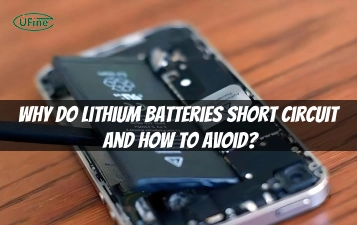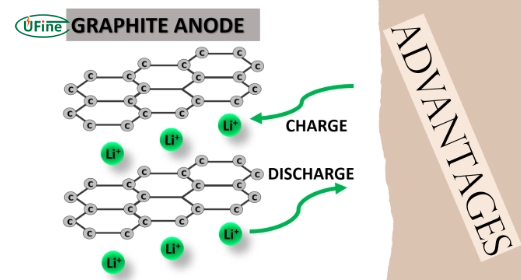
- Part 1. What is a silicon battery anode?
- Part 2. Why is graphite the traditional choice for lithium battery anodes?
- Part 3. How does silicon compare to graphite?
- Part 4. What makes silicon battery anodes better?
- Part 5. What are the challenges of silicon battery anodes?
- Part 6. Why is graphite still important?
- Part 7. Applications of silicon battery anodes
- Part 8. What advancements are being made in silicon battery technology?
- Part 9. Are silicon battery anodes the future?
- Part 10. FAQs
Silicon battery anodes are among the most promising advancements in lithium-ion battery technology today. As the demand for more powerful, efficient, and long-lasting batteries grows, silicon anodes emerge as a potential game-changer. Graphite has been the primary material used for battery anodes for decades due to its stability and cost-effectiveness. However, silicon offers far greater energy density, making it a strong contender to replace graphite in the future.
This article explores the differences between silicon battery anodes and graphite anodes, their advantages and challenges, and why silicon is considered the future of energy storage.
Part 1. What is a silicon battery anode?
A silicon battery anode is an anode material used in lithium-ion batteries that incorporates silicon as its main component. Silicon is highly valued for storing up to 10 times more lithium ions than traditional graphite anodes, making it a key material for improving battery capacity and energy density.
A silicon battery anode allows a battery to store more energy, making it last longer or deliver more power. This innovation is particularly appealing for industries like electric vehicles (EVs) and consumer electronics, where performance improvements are critical.
Artikel Terkait: Lithium Sulfur Battery vs. Lithium Silicon Battery: Key Differences Explained
Part 2. Why is graphite the traditional choice for lithium battery anodes?
Graphite has been the standard material for lithium-ion battery anodes for many years. Here are some reasons why graphite remains a popular choice:
- Stable performance: Graphite is highly stable during charging and discharging, making it a reliable material for batteries.
- Affordable and accessible: Graphite is widely available and relatively inexpensive to produce.
- Durable: Graphite anodes can withstand many charge cycles, ensuring longer battery life.
- Proven technology: Battery manufacturers have decades of experience with graphite, which works well with existing battery designs.
Despite these advantages, graphite anodes have limitations. Their energy density is relatively low, which restricts the capacity of modern batteries. This limitation has pushed researchers to explore materials like silicon.
Part 3. How does silicon compare to graphite?
When comparing silicon battery anodes to graphite, several key differences stand out:
- Energy density: Silicon anodes have a significantly higher energy density than graphite, which can store up to 10 times more lithium ions. This means batteries with silicon anodes can last longer or deliver more power in the same size.
- Charging speed: Batteries with silicon anodes can charge faster than those with graphite anodes. This is particularly important for applications like electric vehicles, where shorter charging times are a significant selling point.
- Durability: While graphite is highly durable, silicon expands up to 300% during charging. This expansion can cause cracks in the material, reducing the battery’s lifespan.
- Cost: Graphite is cheaper to produce than silicon. However, costs are expected to decrease as silicon anode technology advances and production becomes more efficient.
- Environmental impact: Silicon is more abundant and sustainable than graphite, which requires mining and processing that can harm the environment.
Artikel Terkait: Graphene Battery vs. Lithium Battery: Which is Better?
Part 4. What makes silicon battery anodes better?
Here are the main reasons why silicon anodes are considered better than graphite:
- Higher capacity: Silicon anodes can store much more energy, making batteries more efficient.
- Faster charging: They allow quicker charging times, which is critical for modern applications.
- Lightweight: Batteries with silicon anodes can be lighter, making them ideal for electric vehicles and portable devices.
- Future potential: As technology improves, silicon anodes become cheaper and more durable, making them the standard in the battery industry.
Part 5. What are the challenges of silicon battery anodes?
Despite their advantages, silicon battery anodes face several challenges:
- Volume expansion: Silicon expands significantly during charging, which can cause mechanical stress and damage to the battery.
- Shorter lifespan: The expansion and contraction of silicon reduce its durability and the total number of charge cycles.
- Manufacturing complexity: Producing silicon anodes is more challenging and costly than graphite.
- Stability issues: Silicon anodes are more prone to degradation, affecting performance over time.
Researchers are developing solutions, such as silicon-carbon composites and protective coatings, to overcome these challenges and make silicon anodes more practical for commercial use.
Part 6. Why is graphite still important?
Even with the rise of silicon anodes, graphite remains an essential material for lithium-ion batteries. Its stability, low cost, and proven performance make it a reliable choice for many applications. Many battery manufacturers are exploring hybrid designs that combine silicon and graphite to create the best of both worlds.
For example, a silicon-graphite composite anode can offer higher energy density than pure graphite while maintaining better durability than pure silicon. This hybrid approach is seen as a stepping stone toward fully silicon-based anodes.
Part 7. Applications of silicon battery anodes
The adoption of silicon battery anodes could transform multiple industries:
- Electric vehicles (EVs): Silicon anodes can increase driving range and reduce charging times, making EVs more convenient and practical.
- Consumer electronics: Devices like smartphones and laptops could last longer on a single charge, improving user experience.
- Renewable energy storage: Silicon anodes can enhance the efficiency of energy storage systems for solar and wind power.
- Aerospace and defense: Lightweight, high-capacity batteries are crucial for drones, satellites, and military equipment.
Part 8. What advancements are being made in silicon battery technology?
To overcome the challenges of silicon anodes, researchers are developing innovative solutions:
- Silicon-carbon composites: Combining silicon with graphite or other materials improves durability and reduces expansion.
- Nanostructured silicon: Using silicon nanoparticles or nanowires to minimize stress from volume changes.
- Protective coatings: Applying coatings to silicon anodes to prevent cracking and degradation.
- Manufacturing improvements: Scaling up production techniques to make silicon anodes more affordable.
These advancements are bringing silicon battery anodes closer to widespread commercial adoption.
Part 9. Are silicon battery anodes the future?
Yes, silicon battery anodes are widely considered the future of lithium-ion batteries. Their ability to store more energy and charge faster makes them ideal for next-generation technologies. However, they are unlikely to replace graphite in the near term completely. Instead, we may see hybrid silicon-graphite anodes as a transitional solution. At the same time, researchers continue to address the challenges of pure silicon anodes.
Part 10. FAQs
-
What is a silicon battery anode?
A silicon battery anode is a material used in lithium-ion batteries that incorporates silicon to increase energy density and improve battery performance. -
How does silicon compare to graphite for battery anodes?
Silicon has a higher energy density and faster charging capability than graphite but faces challenges like volume expansion and shorter lifespan. -
Why is graphite still used in batteries?
Graphite is stable, cost-effective, and reliable, making it a proven material for lithium-ion battery anodes. -
What are the challenges of silicon anodes?
Silicon anodes face issues like volume expansion, reduced cycle life, and higher production costs. -
Are silicon anodes better for the environment?
Yes, silicon is more abundant and sustainable than graphite, but to maximize its benefits, eco-friendly manufacturing processes are needed.
Related Tags:
More Articles

What Is the Lithium Battery Short Circuit?
What is the lithium battery short circuit? To understand a lithium battery short circuit, we first need to understand how the battery works.
How to Distinguish Battery Cells, Battery Modules, And Battery Packs?
Discover how battery cells, modules, and packs work, their engineering roles, and practical guidance for safe and efficient design.
What is the Difference Between Silver Zinc Battery vs. Lithium-ion Rechargeable?
Compare silver zinc and lithium-ion rechargeable batteries: energy density, cycle life, safety, cost, and uses in drones, medical devices, EVs, and electronics.
What are Watts and Watt Hours in Battery?
Understand watt vs watt-hour in batteries: key differences, how to calculate capacity, and why they matter. Includes free comparison table.
Best 10 Blood Pressure Monitor Battery Review: Finding the Most Reliable
Are you looking for a reliable Blood Pressure Monitor battery? Here is a complete guide with the top 10 best blood pressure monitor batteries.



